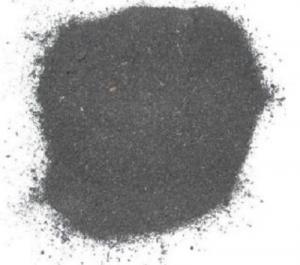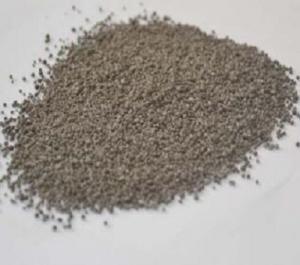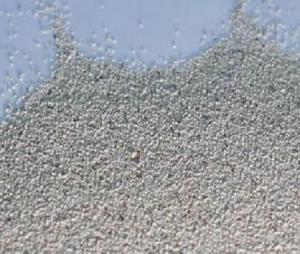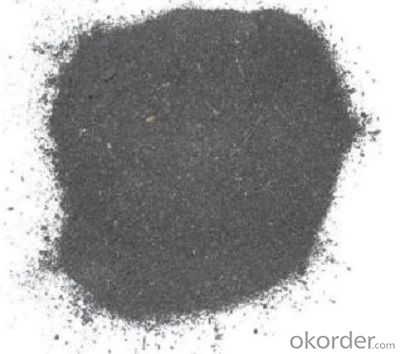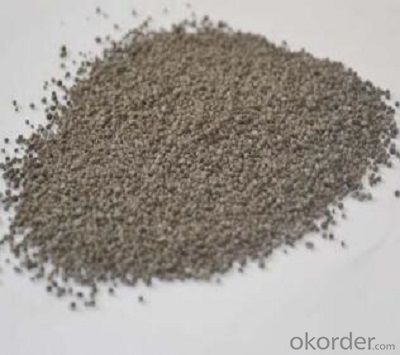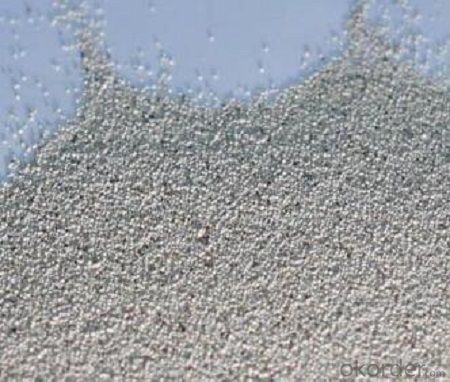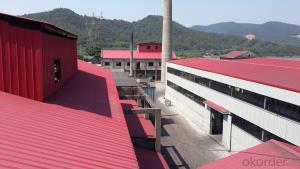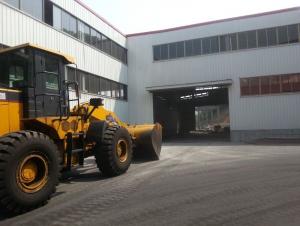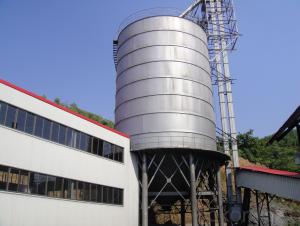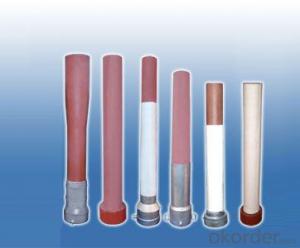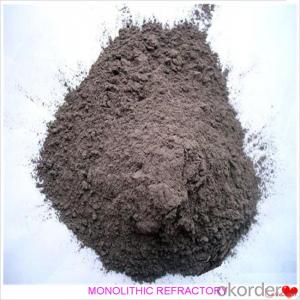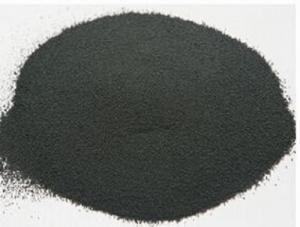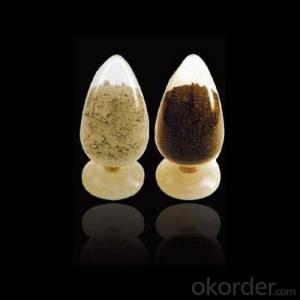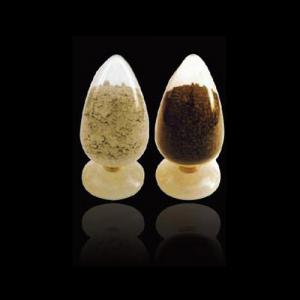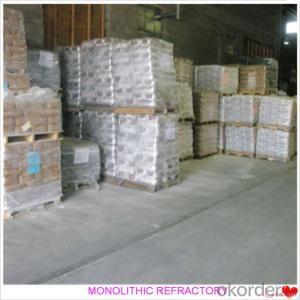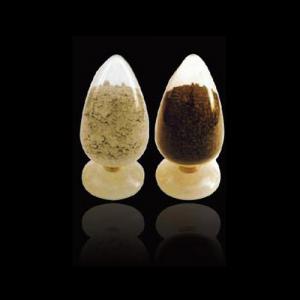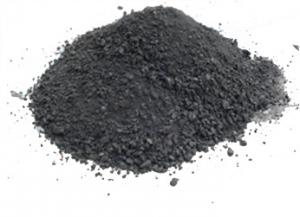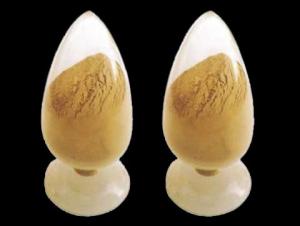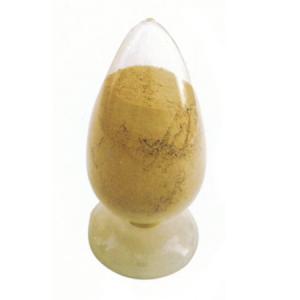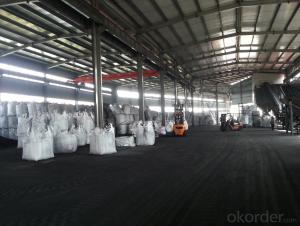Monolithic Refractories for Iron and Steel Industry - Covering Fluxes and Powders
- Loading Port:
- Tianjin
- Payment Terms:
- TT or LC
- Min Order Qty:
- 10 m.t.
- Supply Capability:
- 100000 m.t./month
OKorder Service Pledge
OKorder Financial Service
You Might Also Like
Product Description:
We offer a series of covering flux products including both fine-grained powders and hollow granulated fluxes, so it’s possible for customer to select a suitable material according to operational parameters of each specific application.
Generally for tundish application factors affecting product performance result to be steel grade, exposed steel surface to be covered, casting time, and sequence index.
Regarding ladle applications, critical factors are chiefly the amount and the characteristics of the refining slag.
Increasing demand of better quality steel and subsequent use of high performance basic tundish lining material boosted researching and developing of active basic tundish powders assuring high covering, insulating properties and low corrosion activity.
Moreover, effective NMI (non-metallic inclusions) absorption capability is provided by specific viscosity and surface tension of molten slag layer in direct contact with molten steel.
Plant experience in using these active basic tundish powders gave improved steel cleanness.
Insulating covering fluxes for tundish and ladle
We offer two types of insulating covering fluxes :
Rice ash, with high levels of thermal insulation
Fly ash mixtures, with high levels of thermal insulation and protection against re-oxidation
Insulating MgO-based covering fluxes
Spray-dried covering powders based on magnesite and with very low silica content, with good thermal insulation properties, protection against re-oxidation and low refractory erosion.
Active basic powders
We offer two types of active basic powders:
Active basic powders for tundish (CaO-based) in fine-grain powders and granulated form to maximize absorption of NMI.
Calcium aluminate based material is well known to give metallurgical active slags able to prevent sulphur pick up to the steel. It offers the potential for oxide pick-up and protection against re-oxidation. It is a material obtained by complete melting in high-capacity furnaces of bauxite and limestone. Because such materials have poor insulating properties, it is necessary to add an additional insulating compound on top.
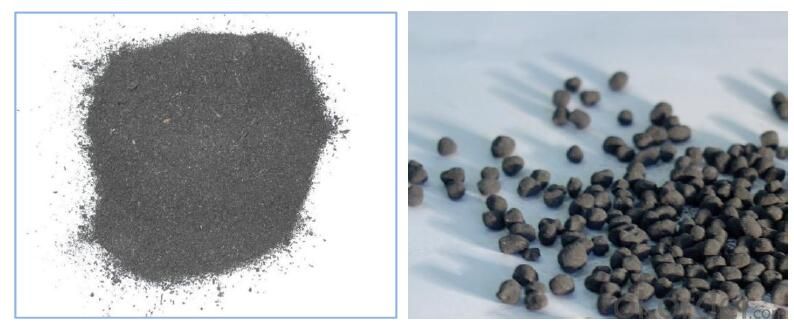
FAQ
Q:Are you a trading company or manufacturer?
A:CNBM is a large-scale central governmental industrial group with its own manufacturing sector, research and development sector, trading sector and logistics sector.
Q:I have some special requirement about specifications.
A:We have a well-rounded product range, which endows us with the capability of applying many special specifications. Please feel free to contact us with yours.
Q:Do you accept OEM service?
A:Yes, we do.
Q:What is your delivery time?
A:It depends on the size/complexity of your order and our own production schedule. Usually we provide a faster delivery than the industry's average.
Q:What is the payment term?
A:Our payment terms are negotiable.
Q:Can I have my own logo on the product?
A:Sure, we can apply your own logo on the products according to your drawings.
- Q: How do monolithic refractories withstand the corrosive environments in steelmaking processes?
- Due to their unique properties and composition, monolithic refractories are capable of enduring corrosive conditions in steelmaking processes. The primary feature of monolithic refractories is their exceptional ability to withstand high temperatures and thermal shock. Steelmaking procedures involve extremely high temperatures, which can reach up to 1700 degrees Celsius. Monolithic refractories are specifically engineered to endure these extreme temperatures without compromising their structural integrity. Moreover, monolithic refractories exhibit outstanding chemical resistance. The corrosive environments in steelmaking processes often include aggressive chemicals like molten metal, slag, and gases such as carbon monoxide and sulfur dioxide. Monolithic refractories are manufactured using materials that possess resistance to these chemicals. Consequently, these materials prevent any reactions and consequent corrosion. Furthermore, monolithic refractories possess a compact and uniform structure. This characteristic aids in preventing the infiltration of corrosive agents into the refractory material, further augmenting its resistance to corrosion. The compact structure also minimizes the formation of cracks and fissures, which can serve as pathways for corrosive agents to penetrate the refractory. Additionally, monolithic refractories are frequently composed of materials with high refractoriness, such as alumina, magnesia, and silica. These materials possess high melting points, rendering them more resistant to the extreme temperatures encountered in steelmaking processes. They also possess low thermal conductivity, which assists in reducing heat transfer and lowering the risk of thermal damage to the refractory. Lastly, monolithic refractories are often formulated with specific additives and binders that enhance their resistance to corrosion. These additives may include materials like zircon, chrome, or graphite, which provide supplementary protection against the corrosive environment. In conclusion, monolithic refractories demonstrate their ability to withstand the corrosive environments in steelmaking processes through their high resistance to temperature and thermal shock, excellent chemical resistance, dense and uniform structure, high refractoriness, and the utilization of specialized additives and binders. These attributes make monolithic refractories an optimal choice for enduring the rigorous conditions of steelmaking processes, ensuring the durability and efficiency of the refractory lining.
- Q: What are the challenges faced in the application of monolithic refractories?
- There are several challenges faced in the application of monolithic refractories. Firstly, one of the major challenges is the proper installation of monolithic refractories. Unlike traditional brick refractories that can be easily laid and stacked, monolithic refractories require specialized skills and techniques for proper application. The consistency and workability of the refractory material must be carefully controlled, and the installation process often requires the use of specialized equipment such as gunning machines or vibrating tools. Another challenge is the selection of the appropriate monolithic refractory material for a specific application. There are various types of monolithic refractories available, each with its own unique properties and suitability for different environments. Choosing the wrong type of refractory material can result in premature failure and costly repairs. Therefore, it is essential to understand the operating conditions, such as temperature, chemical exposure, and mechanical stress, to select the most suitable monolithic refractory material. Additionally, monolithic refractories are susceptible to thermal shock and erosion due to their composition and application method. They are typically made from fine powders that are mixed with water or other binding agents to form a paste. This paste is then applied and dried to form a solid refractory lining. However, during the heating and cooling cycles, monolithic refractories can experience thermal expansion and contraction, leading to cracking and spalling. Moreover, the chemical reactions occurring in some industrial processes can cause chemical attack and erosion of the refractory lining, reducing its lifespan. Furthermore, maintenance and repair of monolithic refractories can also be challenging. Unlike brick refractories that can be easily replaced, repairing monolithic refractories often requires skilled personnel and specialized techniques. The damaged area needs to be removed, and a new layer of refractory material must be applied, ensuring proper bonding and compatibility with the existing lining. This process can be time-consuming and costly, particularly in high-temperature applications where extended downtime can result in significant production losses. In summary, the challenges faced in the application of monolithic refractories include proper installation techniques, selection of the appropriate material, susceptibility to thermal shock and erosion, and complex maintenance and repair procedures. Overcoming these challenges requires expertise, careful planning, and a thorough understanding of the specific operating conditions and requirements for each application.
- Q: How do monolithic refractories help in reducing energy consumption in iron and steel production?
- Monolithic refractories help in reducing energy consumption in iron and steel production by providing efficient insulation and heat retention properties. These refractories have low thermal conductivity, which minimizes heat loss and ensures that the generated heat is effectively utilized for the production processes. Their high refractoriness allows them to withstand extreme temperatures, reducing the need for frequent repairs or replacements that would require additional energy consumption. Additionally, monolithic refractories offer better resistance to thermal shock, which prevents thermal stress-induced cracks and extends their lifespan. Overall, the use of monolithic refractories in iron and steel production aids in optimizing energy usage and improving overall energy efficiency.
- Q: How do monolithic refractories contribute to the overall safety of iron and steel operations?
- Monolithic refractories play a crucial role in ensuring the overall safety of iron and steel operations by providing several important benefits. Firstly, monolithic refractories are known for their high thermal insulation properties, which means they can effectively withstand extreme temperatures and prevent heat loss. This is particularly important in iron and steel operations, where high temperatures are involved in various processes such as melting, casting, and heat treatment. By minimizing heat loss, monolithic refractories help in maintaining a stable temperature environment, reducing the risk of accidents and ensuring the safety of personnel. Secondly, monolithic refractories offer excellent resistance to chemical attacks. In iron and steel operations, various chemicals and gases are present that can corrode and deteriorate the lining of furnaces, ladles, and other equipment. By providing a protective barrier, monolithic refractories prevent the penetration of these corrosive substances, thus extending the lifespan of the equipment and reducing the likelihood of failures or leaks that could pose safety hazards. Additionally, monolithic refractories are known for their structural integrity and high mechanical strength. In iron and steel operations, heavy loads and stresses are common, especially during the handling and movement of molten metal and raw materials. Monolithic refractories can withstand these stresses without cracking or collapsing, ensuring the structural stability of the equipment and minimizing the risk of accidents or equipment failure. Furthermore, monolithic refractories offer excellent thermal shock resistance. During iron and steel operations, sudden temperature changes can occur due to the introduction of cold materials or liquids into hot equipment. This thermal shock can cause cracking and spalling of the refractory lining, which can compromise the safety and efficiency of the operation. Monolithic refractories, with their ability to withstand thermal shock, help in minimizing the risk of unexpected failures and maintaining the overall safety of the operation. In conclusion, monolithic refractories contribute significantly to the overall safety of iron and steel operations by providing high thermal insulation, chemical resistance, structural integrity, and thermal shock resistance. By ensuring a stable temperature environment, protecting against chemical attacks, withstanding heavy loads, and resisting thermal shock, monolithic refractories help in preventing accidents, equipment failures, and potential hazards, thus creating a safer working environment for personnel in the iron and steel industry.
- Q: How do monolithic refractories withstand thermal shock and mechanical stress?
- Monolithic refractories are designed to withstand thermal shock and mechanical stress due to their unique composition and installation process. These refractories are made from a single, continuous material, eliminating any joints or seams that could weaken the structure. Additionally, they have a high thermal conductivity which allows them to efficiently distribute and dissipate heat, minimizing thermal gradients that can cause cracking. Furthermore, the installation technique involves forming the refractory in situ, ensuring a tight fit and reducing the likelihood of mechanical failure. Overall, the combination of their composition, thermal conductivity, and installation method enables monolithic refractories to withstand thermal shock and mechanical stress effectively.
- Q: What are the factors influencing the choice of monolithic refractories for different furnace types?
- There are several factors that influence the choice of monolithic refractories for different furnace types. Firstly, the operating temperature of the furnace is a crucial factor as different monolithic refractories have different temperature resistance levels. Secondly, the type of material being processed in the furnace is important as certain materials may require specific refractories to withstand their corrosive or abrasive nature. Thirdly, the furnace design and its heating method also play a role in determining the suitable refractory material. Additionally, the thermal conductivity, thermal shock resistance, and mechanical strength of the refractory are considered to ensure optimal performance and durability. Finally, cost, availability, and installation requirements are factors that can influence the choice of monolithic refractories for different furnace types.
- Q: What are the specific requirements of monolithic refractories for ladle purging applications?
- The specific requirements of monolithic refractories for ladle purging applications include high thermal shock resistance, excellent erosion resistance, good slag resistance, and low porosity. Thermal shock resistance is crucial in ladle purging applications as the refractory material needs to withstand rapid temperature changes without cracking or spalling. This is particularly important during ladle purging, where the ladle is exposed to high temperatures during molten metal pouring and then quickly cooled down during purging. Erosion resistance is another important requirement for monolithic refractories in ladle purging applications. The refractory material should be able to withstand the erosive action of molten metal streams and metalloids during purging. It should have a high resistance to chemical attack, preventing the material from deteriorating or eroding away. Slag resistance is also necessary for monolithic refractories used in ladle purging. The refractory material should have good resistance to the corrosive effects of slag, which can be present in ladles during purging. Slag can cause chemical reactions that can degrade the refractory material, leading to premature failure. Low porosity is an essential requirement for monolithic refractories in ladle purging applications. Low porosity ensures that the refractory material is impermeable to molten metal, preventing it from infiltrating the material and causing damage. This also helps to maintain the integrity and performance of the refractory lining during ladle purging. Overall, monolithic refractories for ladle purging applications need to exhibit high thermal shock resistance, excellent erosion resistance, good slag resistance, and low porosity to ensure the durability and longevity of the refractory lining in ladles during purging operations.
- Q: What are some common maintenance practices for monolithic refractories in iron and steel furnaces?
- There are several common maintenance practices for monolithic refractories in iron and steel furnaces: 1. It is essential to conduct regular inspections. Trained professionals should inspect the refractories to identify any potential issues, such as wear, erosion, or damage. 2. Promptly repairing and patching damaged or eroded areas is crucial to maintain the integrity of the refractories. Refractory mortars or castable refractories can be used for this purpose. 3. Regularly cleaning the refractory lining is important to remove any build-up of impurities that can affect performance. Mechanical cleaning with brushes or scrapers, as well as chemical cleaning with acids, can be employed. 4. Controlled thermal cycling is often performed to condition and strengthen the refractories. Gradually increasing and decreasing the furnace temperature improves their resistance to thermal shock. 5. Applying protective coatings or sealants to the refractory lining enhances its resistance to chemical attack, erosion, and thermal cycling. These act as barriers against molten metals or slags. 6. Monitoring and controlling operating conditions inside the furnace, such as temperature, pressure, and atmosphere, is crucial. This helps prevent sudden changes that may negatively affect the refractories. 7. Regular training and education for furnace operators and maintenance personnel are crucial. This ensures they understand the importance of proper refractory maintenance, reducing the risk of premature failure. Implementing these maintenance practices significantly prolongs the lifespan of monolithic refractories in iron and steel furnaces. It maximizes their performance, leading to improved efficiency and cost-effectiveness in the production process.
- Q: How do monolithic refractories contribute to the reduction of emissions in iron and steel plants?
- Monolithic refractories play a crucial role in reducing emissions in iron and steel plants through their superior thermal insulation properties. These refractories line the furnaces and other high-temperature equipment, preventing heat loss and enhancing energy efficiency. By minimizing heat wastage, monolithic refractories enable iron and steel plants to operate at higher temperatures, leading to increased combustion efficiency and reduced fuel consumption. This, in turn, results in lower greenhouse gas emissions, making monolithic refractories an essential component in the overall efforts to mitigate environmental impact in the iron and steel industry.
- Q: What are the latest advancements in monolithic refractories for the iron and steel industry?
- One of the latest advancements in monolithic refractories for the iron and steel industry is the development of high-performance castables with enhanced properties. These castables are designed to withstand the extreme temperatures and harsh conditions of iron and steel production processes. One major advancement is the use of advanced bonding systems that provide excellent strength and resistance to thermal shock. These bonding systems, such as nano-bonding technology, help improve the overall performance and durability of monolithic refractories. Another significant development is the introduction of low cement castables. These castables contain a reduced amount of cement, resulting in improved high-temperature strength and erosion resistance. This advancement is particularly beneficial for applications in the iron and steel industry where thermal cycling and mechanical stress are common. Additionally, there have been advancements in the composition of monolithic refractories. The use of advanced raw materials, such as high-quality aggregates and additives, has led to improved thermal conductivity, corrosion resistance, and thermal insulation properties. These developments allow for more efficient and sustainable iron and steel production processes. Furthermore, recent advancements have focused on the development of self-flow castables. These castables have excellent flowability, allowing for easy installation and maintenance of refractory linings. This advancement helps reduce installation time and costs while also ensuring improved lining performance. Overall, the latest advancements in monolithic refractories for the iron and steel industry have resulted in improved performance, durability, and efficiency. These advancements enable the industry to enhance its production processes, reduce downtime, and increase overall productivity.
Send your message to us
Monolithic Refractories for Iron and Steel Industry - Covering Fluxes and Powders
- Loading Port:
- Tianjin
- Payment Terms:
- TT or LC
- Min Order Qty:
- 10 m.t.
- Supply Capability:
- 100000 m.t./month
OKorder Service Pledge
OKorder Financial Service
Similar products
Hot products
Hot Searches
Related keywords
